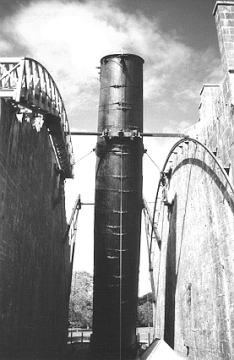
Digital Deep-Sky Data, Visual Observing and the NGC/IC Project
This text is thought as an introduction and describes also some of my present astronomical fields of interest. My astronomical biography can be found here.
Content
1 Introduction
2 The origin of the NGC/IC (more on this and some pictures are here)
3 Photographic sky surveys and modern catalogues
4 Databases and deep-sky software
5 The NGC/IC project
6 Is there still something to discover?
1 Introduction
Till the end of the 19th century visual observing was an essential element of professional astronomy, then astronomers were more and more banished from the ocular, which was replaced by various detectors. Later on they were not even allowed to stay at the telescope. At large observatories an operator is responsible for the hardware, astronomers are watching a monitor nextdoor. Thanks to the internet, even the mountain, and with it an extraordinary view to the stars, is tabu - remote control helps saving travel costs.
This all has not much to do with that kind of astronomy, filling most professional astronomers with enthusiasm in their youth. A developement which causes sheer envy, looking at the freedom of amateur observing. But also amateur astronomy is sharing the trend: sky computers direct the telescope to any object, CCD cameras scanning the sky digitally in short time, making long film exposures unnecessary. Why go out into the cold darkness at all? You can have it all via internet or CD-ROM on your computer! But the digital sky and its obvious advantages cannot rival with the real sky. Don't lose sight of it and prevent transforming into a mere "office astronomer".
What is the attraction caused by digital deep-sky data and what is the importance of visual observing today? Both questions will be discussed from my own point of view and long-time experience. They are strongly related and influence each other, which is demonstrated by the NGC/IC project in a fascinating manner (see chapt. 5). Examples are also given in the work of the VdS-Fachgruppe Deep-Sky, e.g. the successful visual oberservations of Hickson- and Shakhbazian-Galaxy Groups, a complete survey of galaxies in Leo Minor, with precise positions and data of 1379 objects, or the "Deep Sky Buch" project. Finally I belive, that the new VdS-magazine is an outstanding example of a joint-venture between observational and computer-astronomy.
It seems to me, that visual observing is not out of date and after a first digital euphoria a renaissance of pure astronomy is coming up, driven e.g. by the enormous success of dobsonians. It's very satisfiying to search and find objects in the sky independently and to recieve their faint light. Only this direct contact leeds to a very knowledge of the cosmic landscape. It is also of great value and often exciting to know something about the history and nature of the deep-sky objects. The computer can be very helpful to prepare or analyse the observing session, selecting or identifying different kinds of objects. For this task a whole lot of useful software is available, which contains basic data from classical and modern catalogues.
For nonstellar objects, the New General Catalogue (NGC) and the Index Catalogue (IC), with a total of more than 13000 objects (see chapter 2) is still the most important reference. Nearly 6000 objects are within the reach of a 10-12", with 12-14" the number climbs to 9500 and with 14-16" more than 11000 can be seen. But for the faintest, the dwarf galaxy IC 4107 with 18,5m (found on an exposure by Max Wolf), one must own a 36". Even exceptional observers like Steve Gottlieb of Albany/CA have found a little more than half of the crowd. But one can hear a call for even more objects. This may be the wish for observing off the beaten paths. If one smears out all existing NGC/ICs you can find one every 60'. If this is not enough, more catalogues may be added. The Catalogue of Principal Galaxies (PGC) of 1996 contains 100000 galaxies, implying that you may find (with the right aperture) one object every 26'. Including all existing catalogues you'll come to 18'.
What's about the quality of deep-sky data and the modern software? The real sky should be imaged, but this is not the case. So, observing and rather criminalistic work is neccessary to clean the databases. But let's first go back to the 19th century...
2 The origins of the NGC/IC (more on this can be found here)
It were the visual observations of professional and semi-professional astronomers, who contributed most to the developement of astronomy at the end of the 19th century. William Parson, the Third Earl of Rosse, erected his 72" reflector at Birr Castle, Irland in 1845. The „Leviathan of Parsonstown" (Fig. 1) was beaten not until opening the 100" Hooker-telescope on Mount Wilson in 1918. Lord Rosse, his son (the Fourth Earl of Rosse) and the Danish astronomer John Louis Emil Dreyer, who joined in 1874, spend many nights at the telescope, observing the then known nebulae and disvovering new ones [1].

Fig. 1 - Lord Rosse's 72" reflector at Birr Castle (Photo by Harold Corwin).
During this observations Dreyer realized that John Herschel's General Catalogue of Star Clusters and Nebulae from 1864 must be revised and updated due to many new objects. The preparation of observing lists or only asking, if a new object was found earlier by another observer turned out to be very time consuming. Facing this, the Royal Astronomical Society entrusted Dreyer to prepare a "New General Catalogue". He added some 2000 objects from various lists compiled by different observers and sorted the data by right ascension for the equinox 1860. The resulting dataset of 7840 nonstellar objects, the NGC, was first published in 1888 (Dreyer was at that time director of Armagh Observatory near Belfast) . Working on the NGC caused many problems. Dreyer had to assess and compare the notes of many contributors, using apertures from 2" thru 72". Most problems resulted from positional data or object descriptions - the quality of the observations reaching from "sloppy" to "excellent". Due to the great number of objects, he was able to check only a few cases, he had simply to accept most of the data. Fortunately Dreyer had a good feeling, which observations were reliable and which were not and he was also a very careful worker - only a few faults were later found to be typos. Most of them were caused from writing down the declination difference from precession with a wrong sign.
A flood of new observations forced Dreyer to supplement the NGC twice. The Index Catalogue (IC I) completed in 1895 contains 1520 additional objects and the Second Index Catalogue (IC II) of 1908 adds another 3866, both are summarized today as the "IC". The whole NGC/IC is a compendium of the "good" and the "less good", e.g. approximately 1000 entries are found to stars. Curiousely there are a few really bright ones, such as Alpha CVn = NGC 4530 (the reason is, that John Herschel suspected a surrounding nebulosity, which is not existent). Dreyer published extensive correction lists of mistakes, which he or others had found during the years. His merit was also, that he published the sources for every object. But it's surprising to see, that many of the later attempts to revise the NGC/IC strictly ignore these sources! The common procedure: if there is an object at or near the nominal position, it will be the right one, if there is a blank field, the object simply does not exist (I will discuss some curious cases later). Much more concientious was Guillaume Bigourdan (Fig. 2), one of the last visual observing professional astronomers. The work of this remarkable man at Paris Observatory is barely recognized today: the micrometrical measurements of more than 6600 NGC/IC objects! He started in 1884 and published his results in 1919 in monumental five volumes, honored later with the gold medal of the Royal Astronomical Society. The completeness and accuracy of his observations were of great value for later identifications.
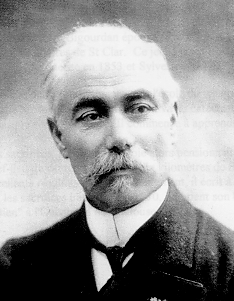
Abb. 2 - Guillaume Bigourdan (1851-1932), one of the last visual observing professional astronomers.
3 Photographic sky surveys and modern catalogues
While Bigourdan was still observing, the astrophotography was entering the scene with great power. The Second Index Catalogue already contains thousends of objects, mostly galaxies, found on photographic plates. Pioneering work was done by Max Wolf at Heidelberg Observatory. The IC II is an inhomogenous mixture: fields, were photos were used to discover new nebulae show a "clustering" of objects (Fig. 3), which is obviousley a selection effect and not a real cluster (of galaxies), as e.g. in Virgo or Coma Berenices. Karl Reinmuth, continuing Wolf's work on the Königstuhl, published a complete photographic revue of the northern "Herschel Nebel" in 1926. This, and also Dorothy Carlson's work at Mt. Wilson Observatory in 1940, led to major corrections of NGC/IC, but did not initiate a new edition of the historic catalogue (only a reprint appeared in 1962)..
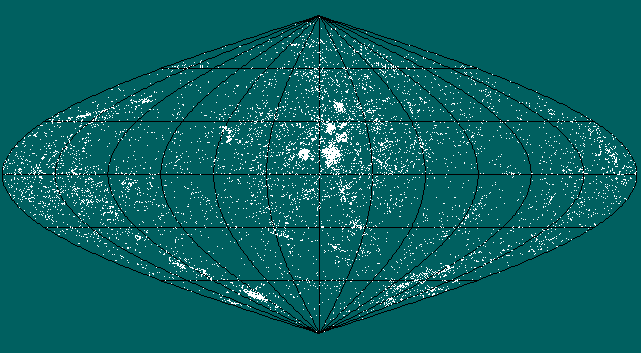
Fig. 3 - Plot of all NGC/IC objects. At some places "clusters" are counterfeited, caused by mixing photographic and visual data.
What's really up in sky, was realized after finishing the first Palomar Observatory Sky Survey (POSS). This was the signal for scanning the skies systematically to catalogue different object classes. George Abell started in 1958, searching for rich clusters of galaxies - he found 2712. Vorontsov-Velyaminov and also Fritz Zwicky scanned the POSS for galaxies (all three by visual inspecting copies of the original plates). Vorontsov-Velyaminov and his coworkers published the data of 29981 galaxies in the Morphological Catalogue of Galaxies (MCG) between 1962 and 1974. Zwicky and his coworkers published the Catalogue of Galaxies and of Clusters of Galaxies (CGCG) between 1963 and 1968, containing 29378 galaxies and 9133 clusters of galaxies. Zwicky later wrote, that he has identified more then 1,5 Millionen galaxies (cluster members included) on the POSS. Nilson's Uppsala General Catalogue (UGC) of 1973 was the first galaxy catalogue based on rather strict definitions. It contains all objects brighter than 14.5m or larger than 1' (total 12940). None of these catalogues has the intention to represent the historically correct NGC/IC objects. Often they refer only to the uncorrected original version of the NGC/IC. Only Nilson removed a few mistakes he had found in the MCG or CGCG. In the appendix of the UGC he has given an interesting report on the history of galaxy catalogues [2].
The problems resulting from large amounts of data, especially in analog processing, are always the same: there are internal data errors, incorrect transcriptions, or wrong cross identifications. Because the POSS consists of a collection of overlapping plates, it comes to double entries in the modern catalogues. A remarkable example is the case of IC 1502 in Cepheus. The galaxiy lies in two different declination zones of the MCG (+12 and +13) and also in two different CGCG-fields (344 and 359), which causes double entries in both catalogues. Moreover it is twice in the UGC, which leeds to the final chain: IC1502 = MCG +12-1-1 = MCG +13-1-2 = CGCG 344-3 = CGCG 359-5 = UGC 12105 = UGC 12706. The double UGC-number is due to a typo: UGC 12105 has AR=22 34.1 (at this position there is no galaxy) and UGC 12706 has AR=23 34.1 (which is the correct position of IC 1502). There are even objects in the CGCG carying three numbers, e.g. NGC 1544 = CGCG 361-11 = CGCG 362-4 = CGCG 370-1A ("A" means one of the two polar fields). It follows that the number of galaxies is less then the number of catalogue entries. In case of the CGCG there are more than 3000 internal identities!
The first catalogue aimed to actualize the whole NGC, was the Revised New General Catalogue (RNGC) of Sulentic and Tifft, published in 1973. This attempt to update the old data using the POSS was really a wrong stroke, mainly due to heavy time pressure. Not only the already published and well known corrections were ignored, a lot of new errors were created by the authors. At places, where no object could be found (caused by bad historical data), the NGC-number was arbitrary given to the nearest "anonymous" object, without consulting the original data. Even some plate faults are carying an RNGC-number now!
The little importance of the RNGC maybe also come from the choosen Equinox 1975, a useless compromise between 1950 and 2000. An example of a severe error in the RNGC is the case of the "Copeland Septett" (Fig. 4), a group of seven galaxies: NGC 3745, 3746, 3748, 3750, 3751, 3753, and 3754. Dreyer has misinterpreted Copeland's "reddish" reference star, leading to wrong absolute positions of the galaxies. Dreyer noticed his error, listing the correct positions in the appendix of the IC I. But the RNGC, not having regard to Dreyer, calls all galaxies (except NGC 3746) "nonexistent". By the way, also Nilson made a mistake, giving incorrect position and magnitude for NGC 3751= UGC 6601. The term "Copeland Septett" was introduced by deVaucouleurs in his Second Reference Catalogue of Bright Galaxies (RC2) published in 1976.
In 1982 also the southern sky was surveyed. Using plates taken with the ESO 1m-Schmidt camera at La Silla, Andris Lauberts and his coworkers inspected all NGC/IC objects south of -17.5° declination. The resulting ESO/Uppsala Survey of the ESO(B) Atlas contains 18438 nonstellar objekts.
In 1988 Roger Sinnott was the first to update the whole NGC/IC. His NGC 2000.0 was published right to the centennial of the old NGC. As in the case of the RNGC, this book was made under time pressure too. Original observations were ignored in favor of modern data (CGCG, MCG etc.). As we have already mentioned, this catalogues are not reliable sources for NGC/IC data, and so many errors appear once again. In spite of the missing strenght, this work was more succesful than the RNGC, the modern Equinox 2000.0 was an advantage.
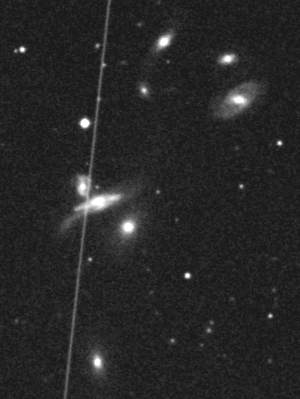
Fig. 4 - Copeland's Septett = Arp 320, which is "not existent" in the RNGC (POSS II image with satellite track).
4 Datenbases and deep-sky software
Unlike the modern catalogues, there are compendia of various catalogues, called "databases" (actually Dreyer's NGC/IC is an early example). e.g. the Lyon/Meudon Extragalactic Database (LEDA), the NASA/IPAC Extragalactic Database (NED), the Arizona Database, or my CAT2000 (see chapter 5).
The PGC is a product of LEDA, responsible for the data is Georges Paturel (University of Lyon). The version of 1989 contains 73177 galaxies, the update of 1996 lists 100872 galaxies, in a new unpublished version the number is reaching 160000. Resulting from this large amount of data, there are many errors in the PGC. Most puzzling are "exact" positions (suggesting an arcsec accuracy), which often differ from reality by more than 1'. Looking at the identity of NGC/IC objects, Patural prefers his own opinion, often ignoring the historical basis. Also curious are some position angles: PGC galaxies, which are only listed in the MCG the PA has to be mirrored at the 90° axis (east), e.g. in the case of NGC 4626 the PGC gives PA=145° , but it must be 35°.
How serious is the problem of incorrect data? One has to distinguish between the "real sky", as seen e.g. on the POSS and the "catalogued sky", found in the databases. The letter is be no means an exact image the real sky, this can be easily demonstrated by a digital superposition. To use computer terms, the digitized POSS, called Digital Sky Survey (DSS), is a matter of "raster data", covering the sky in high resolution. It is not possible to "click" on objects for more information, they remain as anonymous clusters of pixels. Digital catalogues are "vector data" (lists of coordinates etc.), enhanced with various attributes. If they contain errors, so do all derived data products, causing an incorrect image of the real sky. The popular deep-sky software, such as The Sky, Megastar or Guide, contains many data errors, e.g. Guide 7.0 (which I will use as an example in the following) shows NGC 4626 with the wrong PA. For Megastar amateur Larry Mitchel (Houston) tries to enhance the data quality. All this software is able to superimpose vektor and raster data (e.g. using RealSky, a compressed version of the DSS). The fit does not satisfy, but it might be enough for amateur use - anyway, these software has great advantages.
Take for instance VV 607 (Fig. 5) from Vorontsov-Velyaminov's Atlas of Interacting Galaxies, Part II. Guide uses the PGC identification: PGC 49152 = VV 607 = MCG 6-30-103. Two other galaxies are shown in Guide: PGC 49151 = MCG 7-28-81 and NGC 5325 = PGC 49163 = MCG 7-28-30. Looking at Vorontsov-Velyaminov's Atlas (POSS image) it is easily seen, that VV 607 = NGC 5325. Moreover it turns out, that PGC 49151 does not exist, because there are only two galaxies in the field and it is PGC 49152 = MCG 6-30-103 = MCG 7-28-81 = NGC 5325B. I suppose, the error goes back to the MCG, due to overlapping POSS charts. What happens, if different catalogues are mixed, shown the example of NGC 842 and Mrk 1023. Following the PGC and Guide it is NGC 842 = Mrk 1023 = MCG -1-6-55 = KUG 0207-080. Despite of the fact, that the PGC position (flagged "accurate") differs by 1', Mrk 1023 = KUG 0207-080 is a seperate object, 1.5' SSW of NGC 842 (Fig. 6). The pair resembles the case of NGC 4319 / Mrk 205.
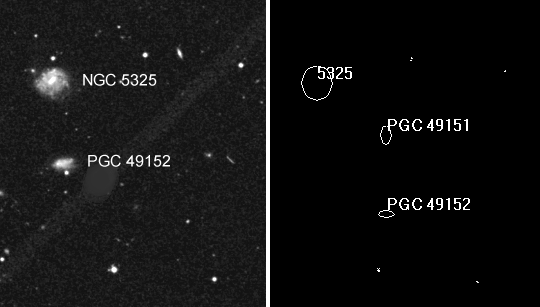
Fig. 5 - The peculiar galaxy NGC 5325 = VV 607 and its vicinity on the POSS (showing a platte flaw) and in Guide.
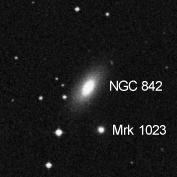
Fig. 6 - The compact galaxy Mrk 1023 near NGC 842.
NED is getting more and more the most reliable source for extragalactic objects. Mainly responsible for the high qualitiy of the data (the example of Fig. 6 is correct there) is Harold Corwin, also the co-author of the RC2, RC3 (Third Reference Catalogue of Bright Galaxies) and the Southern Galaxy Catalogue (SGC). Aim of all databases is to represent a highly correct vector-based image of the real sky. In cases of the NGC/IC major steps towards this are done - thanks to the work of the NGC/IC project.
5 The NGC/IC project
The main reason for cleaning the NGC/IC is, that it still serves as the major source of names for nonstellar objects, both in amateur and professional astronomy. Most of the brightest, largest or nearest and therefore most interesting objects are listed in the NGC/IC (except M 45). It is an astronomical tradition to use the NGC/IC designation in first choice. So it makes sense to be sure, that the designation used belongs exactly to the historical object. Many observers, which contributed to the discovery of the nebulae, were under the most prominent astronomers of their time. It is a question of historical and scientific truth, assigning major finding correctly, otherwise the developement of astronomy will be affected negatively. There are many sad examples in the history of sciene.
Since the mid 70's, I'm concerned with deep-sky data, mainly galaxies, clusters, nebulae, and also quasars. This interest originates from planning visual obserations and the analysis of the results. Early results are the Catalogue of Galaxy Groups (KDG) or the Catalogue of Bright Quasars and BL Lacertae-Objects (KHQ). In dealing with the data, I realized many errors in the literature, particularly the IC was "waste land" at that time. In 1982 my first "Revised Index Catalogue" was compiled, with the aid of Dixon's monumental Master List [3]. Since 1987 I made use of the digital versions of the major catalogues, coming on CCT from the Centre du Donnees Stellaires (CDS). Assembling my own database, I always tried hard to find and correct all kind of errors by turning the data upside down. The result is my database CAT2000, containing now some 150000 nonstellar objects north of -30° declination, which can be viewed by a self-developed software tool. It was very helpful in analyzing various NGC/IC problems. A first complete "Revised NGC/IC" was finished in 1997, containig all available data and identifications. For galaxies, nearly 80% of all objects, gaps in the data (missing magnitudes, sizes, or position angles) were filled using the internet version of the DSS.
Up to 1997 my work was done relatively unnoticed from the outer world, but this changed dramatically when I stumbled on an article in Sky & Telescope, in which the NGC/IC Project was mentioned [4]. This is a joint-venture of amateurs and professional astronomers from all over the world, sharing a common aim, which is also my aim: to clean the standard reference! It's not a formal association, but a loose team of enthusiasts, headed by the initiator and mentor Dr. Harold Corwin (California Institute of Technology/IPAC), one of the leading experts in deep-sky data and catalogues. Since 1997 I'm a member of the team (at present the only European). Other core team members are Brian Skiff (Lowell Observatorium), Steve Gottlieb and Malcom Thomson (both from California), Bob Erdmann (Arizona atabase) and Brent Archinal (USNO). Looking at the website of the project, a lot of work has already been done, many "puzzles" were solved, using historical sources (observers notes), catalogues, images (POSS) or visual observations. The latter is the domain of Steve Gottlieb. His 17,5" dobson is large enough to see most of the NGC/IC objects, but on the other hand small enough to simulate the impressions, which had the 19th century oberservers.
The blue-sensitive version of the POSS, one of the above mentioned sources, is not always helpful, showing most galaxies fainter than they appear visually. This is due to a different brightness in the blue and yellow-green. For galaxies the B-V value is between 0.5m and 1.1m. Look at the case of IC 256 and IC 257 in Perseus (Fig. 7). Both objects were discovered in 1893 by Swift with a 16" refractor. It is confirmed, that IC 257 = UGC 2298, a 13.1m bright elliptical galaxy. Some confusion exists about the identity of IC 256 (in MCG incorrectly as MCG +8-6-11, which is IC 257), as seen in Guide. A careful analysis shows, that this object is identical with the middle galaxy in a group of three, named V Zw 280 by Zwicky (objects A, B and C in Fig. 7). It is interesting, that he gave photographic (blue) magnitudes 17.7m, 17.9m and 18.1m. This was essentially too faint for Swift. Steve Gottlieb and I checked the field independently with dobson-telescopes (17.5" and 16") and we both saw the middle galaxy, estimating a visual brightness of around 15.6 m! In this case the difference B-V exceeds 2 magnitudes!
Meanwhile a new version of my Revised New General Catalogue and Index Catalogue (January 2000) is available. The catalogue contains 13982 entries, all NGC/ICs and additional objects in the vincinity (with extension letters A, B,...) or components. I measured precise positions (1-2") of 12618 objects with RealSky or the 102 CD-ROM version of the DSS (the rest are open clusters and galactic nebulae). Errors found in earlier versions were corrected and cross-identifications actualized (giving 42985 from 71 different catalogues). The final catalogue is now in maximal agreement with the results of the other team members. There is still a rest of 527 "not found" objects (2.7%). I compared the galaxy data with the actual PGC, finding more than 800 incorrect identifications - in the PGC! Moreover there are some 700 NGC/IC galaxies not listed in the PGC!
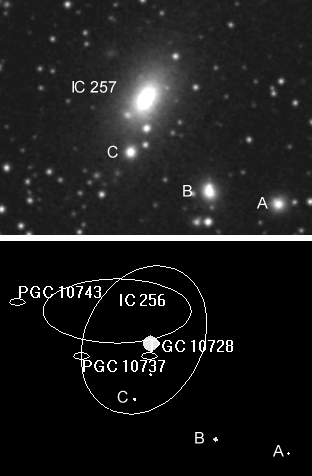
Fig. 7 - The galaxies IC 256 and IC 257 (object B) on the POSS and in Guide.
Here are some more interesting examples, starting with IC 252 in Cetus. This object is not identified by Sinnott, giving only the nominal position. It actually is a 15.5m double galaxy. Input of IC 252 in Guide leads to PGC 144971 at the correct position, but without any reference to the IC object. Paturel has obviously not recognized the identity, Guide knows the position of the galaxy, but treats IC 252 as "nonexistent" and therefore does not show it. Another case is IC 5126 in Aquarius (Fig. 8), found by Javelle using the 30" refractor at Nizza. Sinnott lists only the nominal (but wrong) position. The IC description "vF, vS, R, between 2 st 14" pointing out a very faint, very small, round object between two 14m stars. Unfortunately there is nothing at Javelle's position and it shows, that he has made an error with his reference star. Correcting this, one is led to a 15.7m Sb galaxy, 1° south, not listed in any modern catalogue. Input of IC 5126 in Guide, leads only to a blank field at the nominal position, but there is at least a "non star" from the Guide Star Catalogue (GSC) at the correct position.
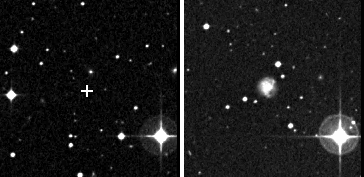
Fig. 8 - At the nominal position of IC 5126 (cross left) there is no object, but IC 5126 is a galaxy 1° south, lying bewteen two 14m stars (right).
Also interesting is the case of NGC 3110 = NGC 3122 = NGC 3518 = MCG -1-26-14, the brighter galaxy in the pair with MCG -1-26-13 (Fig. 9). NGC 3122 is a second "discovery" of NGC 3110 (found first by Stephan) by William Herschel. Herschel confused the reference stars, which led a different (wrong) position in the NGC. The error was recognized later by Stephan and Dreyer. NGC 3518 was found by Stone. He made a sketch, showing a double nebula, and noted "in same field with a nebula discovered by Stephan". But within a radius of 5° there is neither one of Stephan's objects nor a double nebula. Investigating the case, it is obvious that Stone made a typo, his right ascension is too large by exactly 1h! Guide, based on the PGC data, gives a chaotic picture, actually worse than the NGC situation. To begin with, NGC 3110 is shown correct, but the PGC does not give the other NGC numbers, only the informations of the Saguaro Astronomy Club (SAC) cautiously refer to NGC 3122. Input of NGC 3122 leads to PGC 29361, a galaxy with magnitude 18.7m (!), 30' east of NGC 3110 and 2' south of Herschel's position. Paturel's identification is obvious, he has simply adopted the RNGC candidate. Disregarding the wrong position, he completely ignores the fact, that Herschel was definitely not able to see this object with his telescope, describing it moreover as "easily resolvable"! The case of NGC 3518 is an exact copy. The RNGC candidate (PGC 33442) lies at the wrong position (1h east) and is much too faint (17.7m) to be seen by Stone. By the way, the PGC position differs by 1' from the correct value, at least better than the RNGC, missing it by 3'.
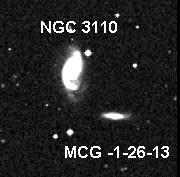
Fig. 9 - The pair of galaxies NGC 3110 = NGC 3122 = NGC 3518 and MCG -1-26-13.
The place is too short here for telling the exciting story of NGC 3497 = NGC 3525 = NGC 3528 = IC 2624, a galaxy in Crater, with the greatest number of different NGC/IC identities. But, from what's said here it might be clear, that the sky-software (all using the same pool of data) must be handled with care. The visual observer is mostly affected by incorrect positions. In case of faint, small objects (galaxies, quasars, planetaries) you search is only succesful, if you look at the right place - or you're imagining things. If you wont look such deep, sky software has many positive features, e.g. for prepraring and analyzing visual observations or photos. It is a helpful tool for many astronomical purposes.
6 Is there still something to discover?
The real sky is much richer than the digital sky. There are still enough anonymous objects to discover. Especially the use of dobsonians and in addition the fact, that many galaxies appear visually brighter than on the POSS, might stimulate the advanced deep-sky observer. Many objects are still waiting, others are not correctly identified or the data must be updated. It is a really interesting work, to clear the situation by visual observing in the sence mentioned above.
A recent example is the "discovery" of 6 anonymous galaxies in the the field of the NGC 999-group by Klaus Spruck and Frank Leiter (Heuchelheim, Germany) [5]. I later investigated [6], why these 15.5m bright galaxies were not noticed by observers of the NGC/IC (in this case Stephan) and they are really uncatalogued (they are not in PGC/Guide). Stephan might be able to see them, while discovering the NGC-999 group members with the 80cm reflector in 1876. Perhaps the seeing was bad or the mirror was steamed up. But in 1891 there was another inspection of the field by Bigourdan with the 30cm refractor at Paris. He discovered IC 240, an object, which was later found to be a chain of 4 faint stars. Only Nilson mentions 3 of the "Heuchelheimer" in the notes of the UGC, which unfortunately contain an error.
Another interesting task is the observation of variable extragalaktic objects. This class contains many quasars, BL Lacertae objects, or active galaxies [7]. Its always exciting, to know something about their physical and historic background. One feels a tingling by the imagination that there might be a gigantic black hole behind the scene, eating cosmic matter and curving space-time. This often compensates for the poor light. I just finished a catalogue of extragalactic objects, which were first discovered as variable stars. The 21 known cases are discussed and the physical parameters, finding charts and historic notes are given [8]. Many of these objects are targets for CCD imaging or even visual observations. Professional astronomy is not able to handle all interesting objects and so amateurs can help. One example is V362 Vul, discoverd by Takalo and Noussek as a "variable star" showing brightness variations between 16.0m and 17.7m. The object is identical with the Einstein-Xray-source E 2200+223, and it appears as a diffuse nebula on the POSS (Fig. 10). In 1990 Shara determined a redshift of z=0.029, catapulting the "star" to a distance of 427 Mill. Lj. The object, which is now thought to be a "starburst galaxy", is not included in the PGC.
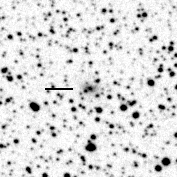
Fig. 10 - V362 Vul, a "starbust galaxy", which was first catalogued as a variable star.
Not only some variable stars were reclassified, also planetaries or even galaxies. Examples are the "planetary nebula" Abell 76, which is actually a peculiar ring galaxy, or vice versa take the "galaxy" UGC 7731 = PGC 41662 = IC 3568, which is a planetary. Also interesting is the galaxy ESO 557-G6, which is listed as GN 6.32.9 in Neckel & Vehrenberg's Atlas of Galactic Nebulae. Guide shows two objects 1' separated, not mentioning the identity!
If all this is not exotic enough, there is another field of barely known objects: Zwicky's compact and eruptive galaxies [9]. His catalogue lists more than 3500 entries, among them many interacting systems, ring galaxies or other peculiar objects. (see examples in Fig. 11). There is no digital version of it today, the data are quit poor and not very accurate. At present I'm working on a revision of Zwicky's catalogue, which could perhaps be included later in NED. Especially ring galaxies are among my favorites (see the example in Fig. 11). I plan to initiate an observing program.

Fig. 11 - Examples from Zwicky's catalogue of compact and eruptive galaxies. From left: 8Zw 20 ("double wing"), II Zw 99 (one of the poor cases of an equidistant triplet), 8Zw 388 ("necklace"), 8Zw 306 ("Ufo") and the ring galaxy II Zw 28 (data and more examples are here).
The POSS and its successors are digitally scanned today. The "Automatic Plate Measuring" yields large amounts of data. The GSC is an early example, where nonstellar objects are flagged as "non star". New catalogues are NPM1G, NGP9, APM and UZC. The measured positions are very precise, but cross-referencing the objects with "classic" ones remains a problem. Many of anonymous galaxies will get a designation, the chance of discovering new objects will be reduced dramatically. But anyway, there is so much to observe, that the ordeal of choice may lead one back to M 13 - why not?!
Literatur
[1] Gingerich, O., J. L. E. Dreyer and His NGC, Sky & Telescope, December 1988, p. 621
[2] Nilson, P., Uppsala General Catalogue of Galaxies, p. 449, Uppsala 1973
[3] Dixon, R. S., Sonneborn, G., A Master List of Nonstellar Optical Astronomical Objects, Ohio State University Press 1980
[4] Goldman, S. J., Understanding Catalog Capriciousness, Sky & Telescope, April 1997, p. 91
[5] Spruck, K., Leiter, F., Eine anonyme Galaxiengruppe, Magellan No. 4, 1999
[6] Steinicke, W., Anonymous Galaxies in the NGC 999-Group, Magellan No. 5, 2000
[7] Steinicke, W., Im Quasar-Fieber, Interstellarum No. 14, p. 24, 1998
[8] Steinicke, W., Extragalactic Objects Discovered as Variable Stars, Umkirch 2000
[9] Zwicky, F., Zwicky, M. A., Catalogue of Selected Compact Galaxies and of Post-Eruptive Galaxies, Zürich 1971; Zwicky, F., Sargent, W. L. W., Kowal C. T., Eighth List of Compact Galaxies, Astron. J. 80, 545 (1975)